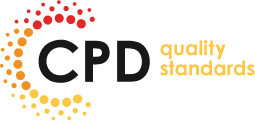Why is COSHH important?
Protecting yourself or your employees from hazardous events in your workplace should be mentioned as a crucial thing! COSHH is something that keeps us ready to handle any unwanted situation
In this blog, we will let you know every detail of what you should know about the importance of COSHH and what impact it will have on your life and workplace.
Coming to the main topic, you may wonder how COSHH works or what it stands for. This comprehensive blog will present all the information about COSHH and how a company, employee, or employer can be aware of hazardous situations.
What Does COSHH Stand For?
COSHH- Control of Substances Hazardous to Health
To protect your health in your workplace or home, knowing how you might get injured or how any infection can contact you is essential.
COSHH controls dangerous substances that infect your health to protect you from infection or sickness.
COSHH is a set of rules and regulations to protect workers from ill health while they are working. It is especially needed in industrial companies and construction firms. By the rules of COSHH, breaking any kind of COSHH by an employer or employee is strictly prohibited.
What is COSHH?
The Control of Substances Hazardous to Health explains the regulations by which you can protect your employees from substances that are dangerous to their health.
Under COSHH, you can learn about the following:
- Learning what the health risks are
- Making decisions for health harm prevention (a COSHH risk assessment)
- Making sure your controls are applied correctly and consistently ensuring that all of your control measures are in good working order; providing information, instruction, and training for workers and anyone else who might use or visit the workplace; providing monitoring and health surveillance as necessary; and planning for incidents and emergencies
A chemical or combination of substances is potentially harmful if inhaled, consumed, comes into contact with, or is absorbed via the skin. These may consist of:
- Chemicals and chemical-containing products
- Gasses
- Dust
- Vapours mists
biological substances that can hurt or afflict people
Some of these chemicals have been linked to cancer and asthma. Many can harm time, and others can seriously damage it.
The effects can manifest immediately, like lightheadedness or itchy eyes, or they can take time to manifest, like lung illness. Many of the chronic or long-term impacts are irreversible once they occur.
Is COSHH Important for the Workplace?
COSHH is an essential part of every workplace. The employer and employees should be aware of their health, and the company should take responsibility for the workers so they do not get into any hazardous incidents.
There are some rules and regulations to maintain COSHH in the workplace.
The company environment should be the first to be blamed if a worker is affected by an allergy.
COSHH (Control of Substances Hazardous to Health) is vital in the workplace because it helps protect employees from the potential risks associated with exposure to hazardous substances. It ensures employers take the necessary measures to prevent or control direction, provide proper training, and maintain a safe work environment. Compliance with COSHH regulations helps reduce the risk of health issues, accidents, and long-term illness caused by exposure to harmful substances.
There are also some COSHH instructions that every company has that have to be followed strictly.
Identify Hazardous Substances: Identify all substances in the workplace that are hazardous to health. This includes chemicals, dust, fumes, gases, biological agents, etc.
Assess Risk: Evaluate the risks associated with each hazardous substance. Consider factors like the nature of its importance, the level of exposure, and the potential harm it can cause.
Implement Control measures: Put measures in place to control the risks. This may involve substituting hazardous substances with safer alternatives, using engineering controls (ventilation, enclosures), and implementing safe work practices.
Provide Training: Ensure that employees are appropriately trained on the risks of hazardous substances. How to handle them and how to use them
There will also be mention of any gas-based company that gives workers any harm. COSHH is a complete structure that provides the safest and correct method of treating workers, specifically in an industrial or construction company.
Mostly, the workers’ safety and responsibility should be taken care of by the company, and they should pay for their safety.
Moreover, COSHH( Control of Substances Hazardous to Health) is important in the workplace because it helps protect employees from exposure to hazardous substances. It ensures proper handling, storage, and disposal of such chemicals, reducing the risk of accidents, illness, and long-term health issues. By following COSHH regulations, workplaces can create a safer environment and safeguard the well-being of their employees.
What things does COSHH cover?
COSHH covers a wide range of hazardous substances in the workplace:
- Chemicals: Such as cleaning agents, solvents, paints, and adhesives
- Dust is generated from processes like woodworking, construction, or metalworking.
- Gases: From welding, soldering, or other industrial activities.
- Biological agents: Bacteria, viruses or fungi that may be present in specific work environments
- Nanotechnology
Who is in charge of COSHH?
The person in charge of COSHH is the responsible employer, who, under the employer’s supervision, should take responsibility if any minor or significant things happen to any worker. This thing may not be serious, but it also needs to be. The worker’s life is vital to the company, too; they should think about it.
COSHH refers to the Control of substances hazardous to health regulations in the UK. The organisation responsible for overseeing COSHH is the Health and Safety Executive (HSE). They are in charge of regulating and enforcing measures to control exposure to hazardous substances in the workplace to ensure the health and safety of employees.
The Health and Safety Executive (HSE) is a regulatory body in the UK responsible for ensuring health and safety at work. It plays a vital role in enforcing and promoting safety standards across various industries, aiming to protect employees and the public from workplace hazards. HSE provides guidance, conducts inspections, and enforces regulations to minimise risks, accidents, and exposure to hazardous substances. Their efforts contribute to creating safer working environments and fostering a culture of health and safety in the UK.
The Health and Safety Executive (HSE) provides several benefits to both employers and employees:
HSE is vital for workers working in hazardous places and dealing with construction.
What is a dangerous substance?
The hazardous substances can be felt everywhere. The workers will be the primary beneficiaries, according to UK health and safety regulations. The workers and company should mention and make sure about the precautions for the worker’s safety.
Workers are also responsible for maintaining COSHH, like if a company is maintaining fire safety and many other things like chemical gas.
Hazardous’ substances will usually be classified and labelled as falling into one of the following groups:
‘Substance’ can include any of the following:
Gases
Vapours
Dust
Micro-organisms
Liquids
Solids
Fumes
Mists
So a hazardous substance can be anything that can cause injury or damage to people or property.
Preventing dangerous substances from causing harm in the workplace involves a multi-faceted approach. Substitution is the first, which is less hazardous.
Engineering controls, such as ventilation systems and isolating work areas. Limit the release of dangerous substances. Administrative controls like task rotation and time limits reduce exposure.
Providing appropriate personal protective equipment and ensuring its correct usage is crucial. Thorough training educates employees about risk, safe handling, and emergency responses.
Storage protocols, clear labelling, and emergency procedures help manage risks. Regular inspections, health surveillance, and involving employees enhance prevention.
Complying with regulations, maintaining records, and staying informed ensure a comprehensive strategy against dangerous substances, safeguarding workers and the environment.
COSHH Regulations
The COSHH (Control of Substances Hazardous to Health) regulations are guidelines established to protect individuals from the potential health risks posed by exposure to hazardous substances in the workplace.
These regulations require employers to identify and assess the risk risks associated with these substances, including chemicals, fumes, dust, biological agents, and other potentially harmful materials. Employers are responsible for implementing measures to prevent or minimise exposure, such as proper ventilation, containment, and personal protective equipment (PPE).
COSHH regulations also emphasise the importance of proper training, information dissemination, and monitoring of employees’ health about hazardous substances.
Regular reviews of risk assessments and control measures are crucial to ensuring ongoing safety. By adhering to COSHH regulations; workplaces aim to create a safe environment, mitigate hazards, and safeguard the well-being of employees and others who might be affected by the presence of hazardous substances.
It is also a legal framework in the UK that outlines the responsibilities of employers and employees in managing and controlling hazardous substances in the workplace.
These regulations require employers to assess the risks associated with dangerous substances, implement control measures to minimize exposure, provide employees with proper training and information, and regularly monitor health conditions.
Employers must also maintain accurate records of risk assessments and ensure that appropriate personal protective equipment (PPE) is provided. COSHH regulations are legally binding and play a crucial role in safeguarding the health and safety of workers while handling hazardous materials. Failure to comply with COSHH regulations can result in fines and potential legal action.
What Happens If You Fail To Complete COSHH?
Initially, to complete COSHH (Control of Substances Hazardous to Health), which is its meaning, you must not only know what COSHH is but also write about it. You don’t know why I’m doing this, but I need to do it because life is hard, and there is no excuse to make it because COSHH is so important that many people die and suffer a lot from it. It is high time to prevent controls that are hazardous to health and the economy.
The economic state of COSHH can also cause headaches, and many gain from the HSE regulation. There are some rules and regulations to be followed by people suffering from COSHH. This is almost every reason why it can be recognised as having potential.
Research shows that exposure to hazardous substances causes thousands of workers to become ill each year. CoSHH (The Control of Substances Hazardous to Health Regulations) was introduced in response to increased accidents and illnesses. This law offers a foundation for protecting those who handle dangerous drugs. Employers must evaluate the risks of exposure to any material that could harm their employees’ health and take steps to protect their health and safety at work.
If COSHH is not effectively handled, your staff may have to deal with these hazardous compounds’ harmful effects, occasionally resulting in death. Inaccurate assessments will lead to decreased production.
COSHH Law for Employers
The Control of Substances Hazardous to Health (COSHH) regulations established in the UK constitute a crucial legal framework for employers to effectively manage and mitigate the risks associated with substances that could be detrimental to the health of their employees.
Under the COSHH regulations, employers must comprehensively assess the potential risks of hazardous substances in their workplace environments.
This involves identifying and evaluating the various substances present, considering the possible routes of exposure, and determining the potential health impacts on employees.
Employers must therefore put strict control measures in place to reduce or eliminate the hazards posed by these dangerous substances. Some of these approaches include utilising less toxic substitutes, adding engineering controls to restrain the senses, or putting administrative controls such as safe work practices and operational rules in place. To protect additional employees who might still be exposed to these toxins despite other control measures, personal protective equipment (PPE) should be made available.
Additionally, companies must provide their staff with accurate and thorough information about potential hazards they may encounter while performing their duties. This involves giving detailed instructions on handling, storing, and disposing of these chemicals. They should receive adequate training and education to ensure they have the information and skills necessary for their jobs.
Moreover, regular monitoring and health surveillance are essential for ensuring COSHH compliance. Employers must routinely evaluate the efficiency of the imposed control measures and monitor their workers’ health for any indications of negative consequences from exposure to hazardous substances. This ensures early diagnosis of any health risks and permits fast adjustments to the control measures, as needed.
The COSHH regulations emphasise that companies must carefully manage the risks of hazardous substances to prioritise their employees’ health and safety. Employers can establish a workplace climate that supports employees’ well-being by doing thorough risk assessments, putting in place strong control measures, giving workers enough information and training, and keeping a close eye on monitoring and health surveillance.
COSHH Law for Employees
The Control of Substances Hazardous to Health (COSHH) rules in the UK strongly emphasise the necessity for employees to abide by the safety policies and procedures established by their employers. Employees are responsible for adhering to the directions and rules for handling, applying, storing, and disposing of hazardous materials. Wearing any required personal protection equipment (PPE), using engineering controls, and adhering to established safe work practices are all examples.
The proper theory of COSHH for employees is the main reason why there are some rules and regulations. According to UK law, all workers should have COSHH training before they start their respective jobs. You can also visit One Education’s COSHH website online.
Employees are also urged to actively engage in any training programmes offered by their business to improve their knowledge of the potential dangers associated with hazardous materials and how to handle them safely. Employees must immediately report concerns or events involving potentially harmful substances to their managers or other approved safety personnel.
Employees should also assist with any health surveillance initiatives their employer may carry out to ensure COSHH compliance. This may entail undertaking medical exams or health checks to check for adverse health impacts from exposure to dangerous substances.
Staff members contribute significantly to COSHH compliance by adhering to safety procedures, using provided safety equipment and training, and quickly reporting any problems. This group effort promotes a safer workplace and assists in reducing health risks brought on by hazardous materials.
Why do you need COSHH Training?
COSHH training is crucial to protecting the health and safety of workers who handle or are around hazardous substances at work. Through this training, employees are given the knowledge and abilities necessary to comprehend the dangers of these chemicals and how to handle them safely.
Employees participating in COSHH training learn about the potential health risks associated with particular compounds, how to spot warning signs, and the best ways to reduce or prevent exposure.
The proper use of personal protective equipment (PPE), the significance of adhering to established protocols, and the importance of employing engineering controls to limit risks are all covered in COSHH training. Employees receive thorough instruction on handling, storing, and properly disposing of hazardous materials to reduce risk.
Conclusion
Furthermore, COSHH training empowers employees to contribute to a safe working environment actively. They become more vigilant in identifying potential hazards, reporting incidents, and participating in health surveillance activities if required. Ultimately, COSHH training equips employees with the knowledge to protect themselves and their colleagues from the risks associated with hazardous substances, promoting a culture of safety and compliance within the workplace.


![]() 14 minutes
14 minutes
































